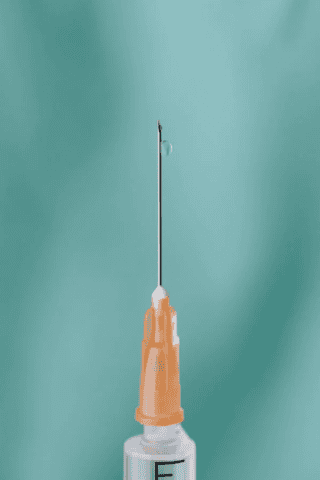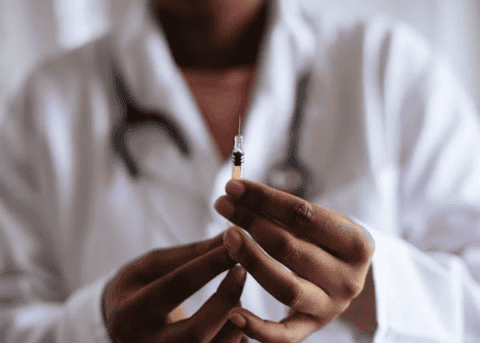Alopecia is a common condition that affects millions of people worldwide. It is the medical term for hair loss, which can occur on the scalp, face, or body. While there are various treatment options available, injections have gained popularity as a potential solution for alopecia. However, the question remains: are injections really the best solution for alopecia?
In this article, we will delve into the topic and explore the different aspects of injections as a treatment for alopecia.

Understanding Alopecia: Causes and Symptoms
Alopecia is a variety of diagnoses with multifactorial causes. The exact mechanisms that lead to hair loss depend on the diagnosis.
In some types of alopecia, such as androgenetic alopecia and perimenopausal hair loss, one of the key factors in alopecia is the role of hormones, particularly androgens like testosterone. Androgens can affect hair growth by shortening the hair growth cycle and leading to miniaturization of hair follicles. This process can result in the gradual thinning of hair or even complete hair loss in certain areas of the scalp.
Common Symptoms of Alopecia
The symptoms of alopecia can vary depending on the type and severity of the condition. Some common symptoms include:
- Patchy or complete hair loss
- Thinning of hair
- Itching or irritation on the scalp
- Inflammation or redness
In addition to the physical symptoms, alopecia can also have a significant impact on an individual’s emotional well-being. Hair loss is often associated with changes in self-esteem and body image, leading to feelings of self-consciousness and even depression in some cases. Seeking support from healthcare professionals, support groups, or mental health counselors can be beneficial for individuals experiencing these emotional challenges.
SHOP: Revian Red cap for hair loss
Different Treatment Options for Alopecia
Before treating alopecia, or hair loss, it is important to get a diagnosis. There are different types of hair loss which will require different treatments. When it comes to treating alopecia as a category, there are several options available. These include topical treatments, oral medications, and procedures such as injections. It’s important to select the option that matches the diagosis for hair loss.
Aside from these common treatments, there are also alternative therapies that some individuals explore to address alopecia. These can range from acupuncture and essential oils to laser therapy and dietary supplements. While the effectiveness of these alternative treatments may vary, they provide additional options for those seeking a holistic approach to managing alopecia.
Topical Treatments and Their Effectiveness
Topical treatments, such as minoxidil, are commonly used to stimulate hair growth. These medications are applied directly to the scalp and are believed to increase blood flow to the hair follicles, promoting hair growth. However, the effectiveness of topical treatments can vary from person to person, and they may not work for everyone.
In addition to minoxidil, there are other topical treatments available, such as corticosteroids and anthralin, which can also help in managing alopecia. These treatments work in different ways, targeting various aspects of the hair growth cycle to promote regrowth. Consulting with a dermatologist can help determine the most suitable topical treatment based on individual needs and preferences.
Oral Medications and Their Impact
Oral medications, such as finasteride, are another option for treating alopecia. These medications work by blocking the conversion of testosterone to dihydrotestosterone (DHT), a hormone that is believed to contribute to hair loss. While oral medications can be effective for some individuals, they may also have side effects and are not suitable for everyone.
It is important to note that oral medications for alopecia are typically prescribed for male pattern baldness and may not be as effective for other types of hair loss. Women who are pregnant or planning to become pregnant should avoid handling crushed or broken tablets of oral alopecia medications due to the risk of potential harm to a developing male fetus. Consulting with a healthcare provider is crucial before starting any oral medication for alopecia to ensure safety and efficacy.
In-Depth Look at Injections for Alopecia
Injections, specifically corticosteroid injections, have been used as a treatment for alopecia associated with inflammation, such as alopecia areata and central centrifugal cicatricial alopecia (CCCA), for many years. These injections are administered directly into the affected areas of the scalp or hairline. The corticosteroids work by reducing inflammation and suppressing the immune system, which can help stimulate hair regrowth.
The injections target the specific areas of hair loss, delivering the medication directly to the affected follicles. This targeted approach can be more effective than topical treatments, as it allows for a higher concentration of the medication to reach the hair follicles.

How Do Injections Work for Hair Loss?
When corticosteroid injections are administered into the scalp, they target the underlying inflammation and immune response that may be causing hair loss. By reducing inflammation, the injections can help create a more favorable environment for hair follicles to regrow.
In addition to reducing inflammation, corticosteroid injections can also help regulate the immune response in the scalp. In conditions like alopecia areata, the immune system mistakenly attacks the hair follicles, leading to hair loss. By suppressing this immune response, corticosteroid injections can help prevent further damage to the hair follicles, allowing for potential regrowth.
Potential Side Effects of Injections
While corticosteroid injections can be an effective treatment for alopecia, they are not without risks. Some common side effects may include pain or discomfort at the injection site, temporary thinning of the skin, and changes in skin pigmentation. It is important to discuss these potential side effects with a healthcare professional before undergoing treatment.
Moreover, repeated corticosteroid injections may lead to other side effects such as skin atrophy, the thinning of the skin due to the breakdown of collagen and elastin fibers. This can result in the skin becoming more fragile and prone to bruising. It is essential for individuals receiving corticosteroid injections to be monitored closely by a healthcare provider to minimize the risk of these side effects.
Comparing Injections to Other Alopecia Treatments
When considering the best treatment option for alopecia, it is essential to compare injections to other available treatments.
There are several factors to consider when evaluating different treatment options for alopecia. In addition to injections and topical treatments, oral medications are also commonly used to address hair loss. Each type of treatment works in a unique way to target the underlying causes of alopecia, whether it be autoimmune-related, hormonal, or stress-induced.
Effectiveness: Injections vs. Topical Treatments
While both injections and topical treatments have shown promising results in promoting hair regrowth, the effectiveness can vary depending on the individual. Some individuals may respond better to injections, while others may see better results with topical treatments. Factors such as the type and severity of alopecia, as well as individual response to specific ingredients, can influence the effectiveness of each treatment option. It is crucial to consult with a healthcare professional to determine the most suitable treatment option tailored to your unique needs.
Furthermore, lifestyle factors such as diet, stress levels, and overall health can also play a significant role in the effectiveness of alopecia treatments. A holistic approach that combines medical treatments with lifestyle modifications may yield the best results in promoting hair regrowth and overall well-being.
Safety: Injections vs. Oral Medications
When it comes to safety, corticosteroid injections generally have fewer systemic side effects compared to oral medications. Since the injections are targeted directly at the affected areas, the risk of systemic absorption and potential side effects is reduced. However, it is still important to consult with a healthcare professional to assess the potential risks and benefits of injections. Monitoring for any local side effects at the injection site is also crucial to ensure the treatment is well-tolerated and effective.
Making the Right Treatment Choice for Alopecia
Choosing the most appropriate treatment for alopecia can be a complex decision. Several factors should be considered when making this choice.
Understanding the underlying causes of alopecia is crucial in determining the most effective treatment. Alopecia can be caused by a variety of factors, including genetics, hormonal imbalances, autoimmune conditions, and stress. Identifying the specific cause of hair loss can help tailor the treatment approach for optimal results.
Factors to Consider When Choosing a Treatment
Some factors to consider when choosing a treatment for alopecia include:
- The diagnosis
- The severity of hair loss
- Patient preferences and lifestyle
- Available treatment options
- Cost considerations
- Potential side effects
Another important factor to consider is the long-term sustainability of the chosen treatment. Some treatments may offer quick results but require ongoing maintenance, while others may provide gradual improvement with less frequent interventions. It is essential to weigh the pros and cons of each treatment option based on individual needs and expectations.
Consulting with a Healthcare Professional
A healthcare professional specializing in hair loss can provide valuable insight and guidance in choosing the most suitable treatment option for alopecia. They can assess individual needs and preferences, provide information about available treatments, and address any concerns or questions.
Additionally, seeking support from a mental health professional may be beneficial for individuals experiencing emotional distress due to hair loss. Coping with alopecia can have a significant impact on self-esteem and body image, and addressing these psychological aspects is an important part of comprehensive care.
Conclusion
Injections can be a viable treatment option for alopecia, particularly corticosteroid injections. While they may not be the best solution for everyone, they have shown promising results in promoting hair regrowth. However, it is important to consider individual factors, consult with a healthcare professional, and weigh the potential risks and benefits before making a treatment decision. Ultimately, the right treatment choice for alopecia will be unique to each individual, and a personalized approach is key to finding the most effective solution.

